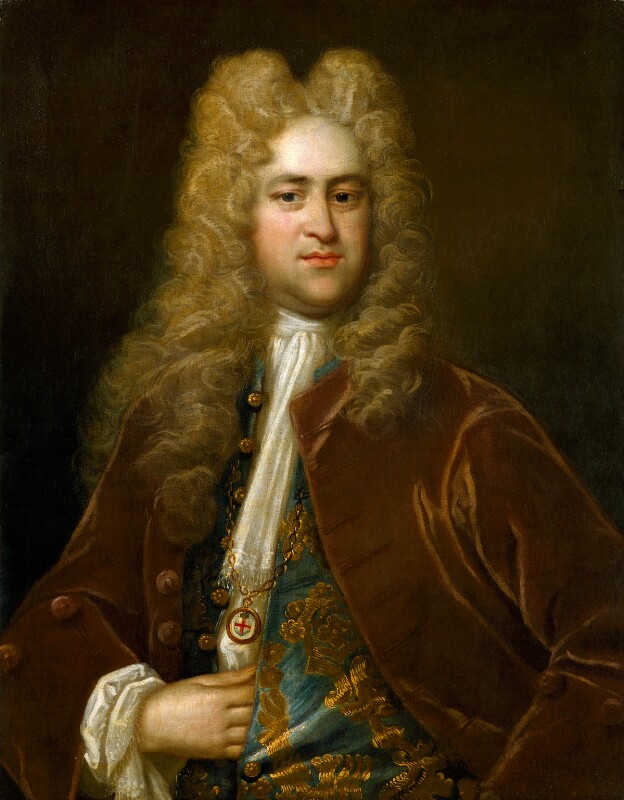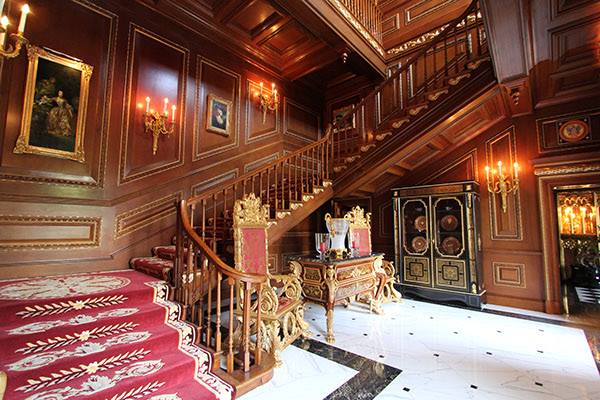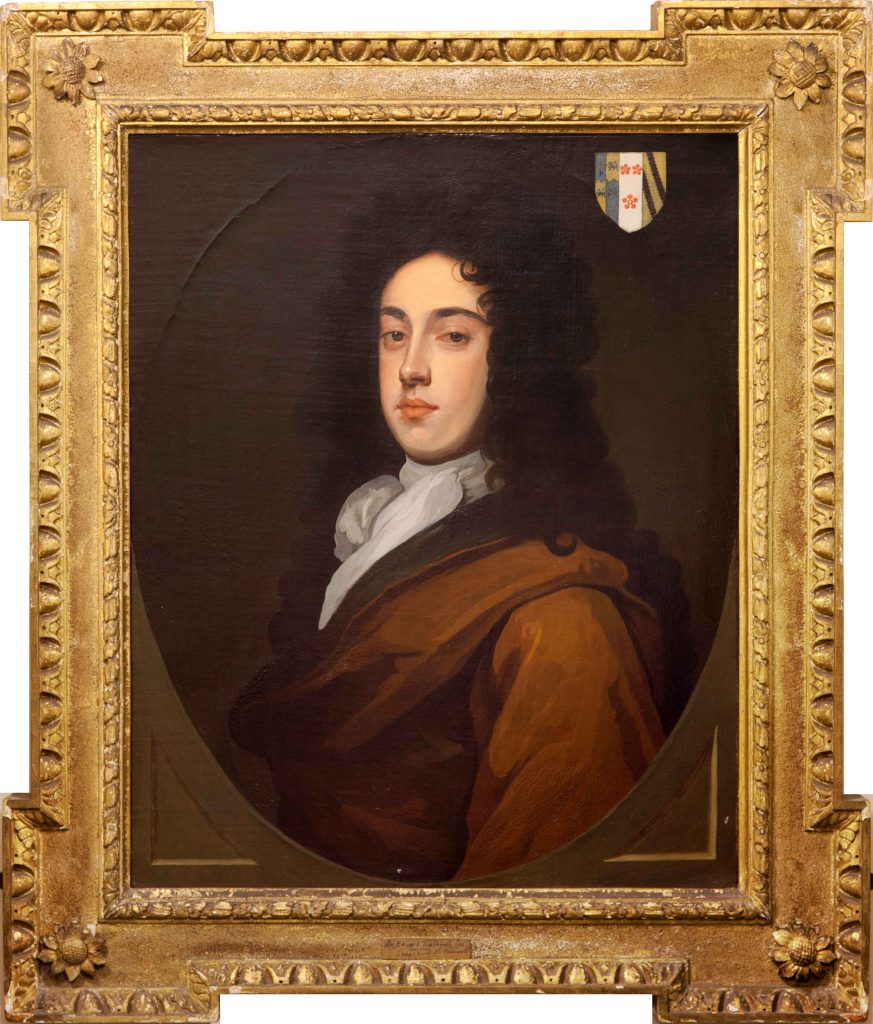
Anyone committing to build themselves a house no doubt puts a good deal of thought and research into the design beforehand, and it was no different for Edward Southwell when he was planning his new home at Kings Weston. Although he had appointed the Queen’s architect, Comptroller of the Royal Works, Sir John Vanbrugh to design the building Southwell would have been keen to make sure the designs, and the cost of the project, suited his needs. In appointing Vanbrugh he had already committed himself to the most modern and innovative architecture of the day. It is difficult now to picture quite how revolutionary the architecture was. For comparison, most of the grand houses around Bristol were still largely Tudor structures. At the time, nationally there were relatively few houses that adopted the newly fashionable Classical style we might now associate with grand stately homes. The revolution in style had only really taken hold in the decades after the Restoration of Charles II to the throne in 1660, and took time to establish after the privations of the Civil War and Commonwealth era. If Southwell was to get inspiration for his new house he had a shallow pool from which to drink.
Seemingly with little plan for what to replace it with Southwell began demolition of his old family home in Spring 1711. By December the same year his sister, Helena le Grand, lamented to family friend John Perceval
“we expect my brother in town the end of the week after filling his belly with the ruins of Kingsweston for I can call it no otherwise.”
Still, in March the following year, Southwell himself confessed to Perceval “Kings Weston house is almost down though I don’t know what to build in the room” – an extraordinary lack of foresight! In the same letter he notes that he is making his gardens there “very fine” though the pressing priority of the house designs continued to elude him.
On April 25th Southwell set off from his London house, Spring Gardens, for ten days at Kings Weston, with an intention to set out the new foundations for the house. Rather than hurry to the building site an itinerary had been devised that would take in many of the most modern house architecture between the Capital and Bristol. Southwell’s own travel journals record the visits made on the four day trip and each short entry is accompanied by very basic notes on the incidence of garden features, architecture and stables. This was a study trip to get inspiration, and perhaps some housebuilding advice.
Beginning on the 25th April
Duke Schomberg’s – Uxbridge (Hillingdon House)
Sr Roger Hill’s – Denham Place, Buckinghamshire
Sr Richard Temple – Stowe, Buckinghamshire
Mr Boyle’s – Middleton Stoney, Oxfordshire
D. of Shrewsbury – Heythrop Park, Oxfordshire
Cornbury Park, Oxfordshire
Dodington, (Gloucestershire)
This map shows all the stops on the route.
Today many of these buildings are fairly obscure, if not forgotten. Some have been entirely rebuilt or altered, but at the time they represented a good selection of the modern architectural or landscaping works, utilising the most current styles, construction techniques, and building technology.
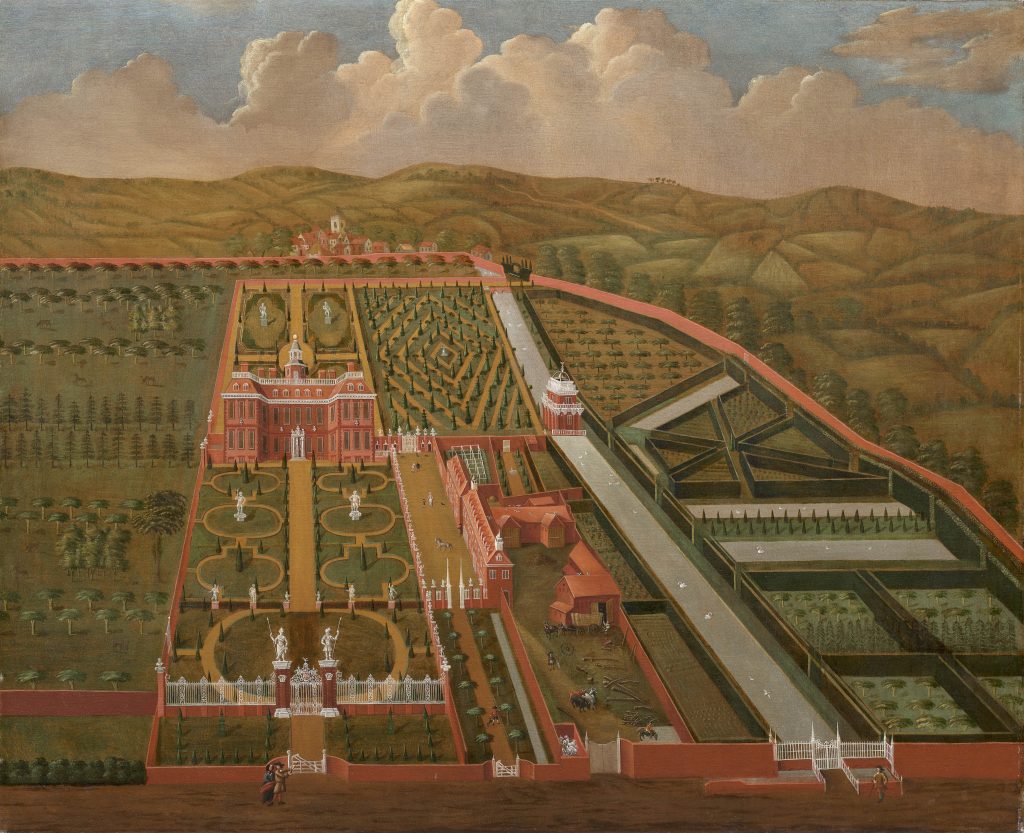
Hillingdon House is not supposed to have been commenced until 1717, so what Southwell saw there is unknown. Denham Place had been completed in 1701 and was surrounded by fine formal garden compartments, including a long ornamental canal, that set the house in the centre of a lavish pleasure ground. The ornamental garden buildings, gates, and statues added opulence to the house itself, which was built of brick. Well-mannered with good proportions it was in a fairly staid style, perhaps even out of date for its time. Inside, a grand central staircase was one of the finest features along with other finely fitted out rooms; perhaps these were inspiration for what Kings Weston could offer.
Stowe house and gardens are now internationally known, and Vanbrugh later worked to embellish its gardens with ornamental buildings, but Southwell will have seen an earlier, less extravagant, house. Built in 1676 it was similar to Denham in its general plan and style with ‘H’ plan and hipped roofs. Both these houses had balustrade rooftop terraces and architecturally prominent chimneys. Architecturally they were fairly derivative, following almost standardised patterns after Burlington house, London, a building, amongst other fashionable examples, that set the mould for house design at the start to the Restoration era.
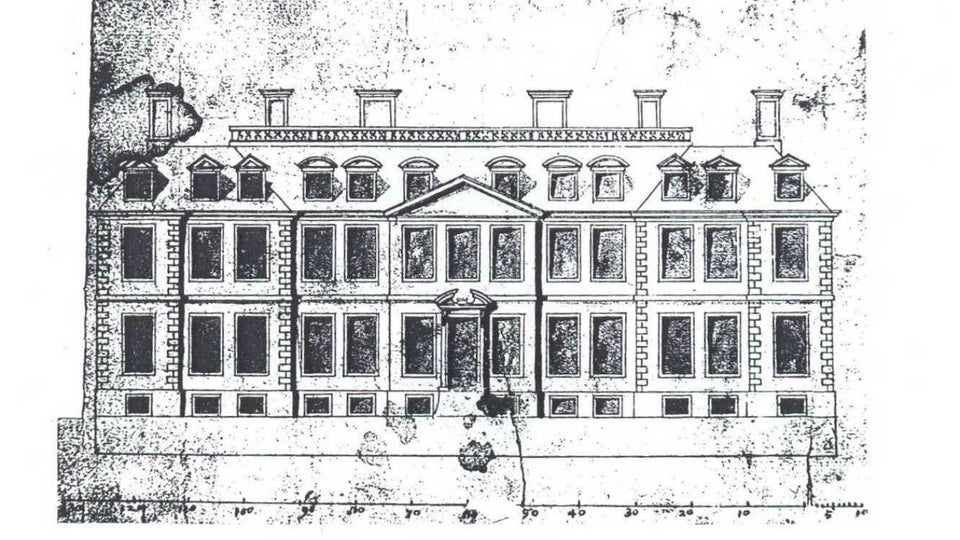
Middleton Stoney was built around 1710. Unfortunately it was completely rebuilt in the 1750s and no earlier depiction has been located to know what he saw there.
Heythrop Park was the most architecturally ambitious building visited. Begun in 1706 it was nearing completion when Southwell visited. Not only would it have given him an insight into the modern Baroque style, but he could have sought direct advice from builders and other people involved with the construction. Applied columns in the Corinthian style and ‘Giant Order’, robust window keystones, and an emphasis on the main entrance with its portico have some parallels with what happened at Kings Weston. The unique interiors of this house were lost in a fire in the 1830s.

Cornbury, though much earlier, shared similar features to Heythrop, but is more restrained in its exuberance. Here, on the south east wing, the Portico is engaged with the façade, with bold projections at the cornice. Imagining the frontage without the two end bays, and a silhouette enriched by a rooftop arcade, this building has stronger parallels with Kings Weston than Heythrop. The south-east wing was designed in 1666 by Hugh May, and architect who Vanbrugh admired for the work he’d done at Windsor Castle. The interiors here have been heavily altered, but there was once a double height hall here whose over-scaled fireplace with a Vanbrughn boldness survives.
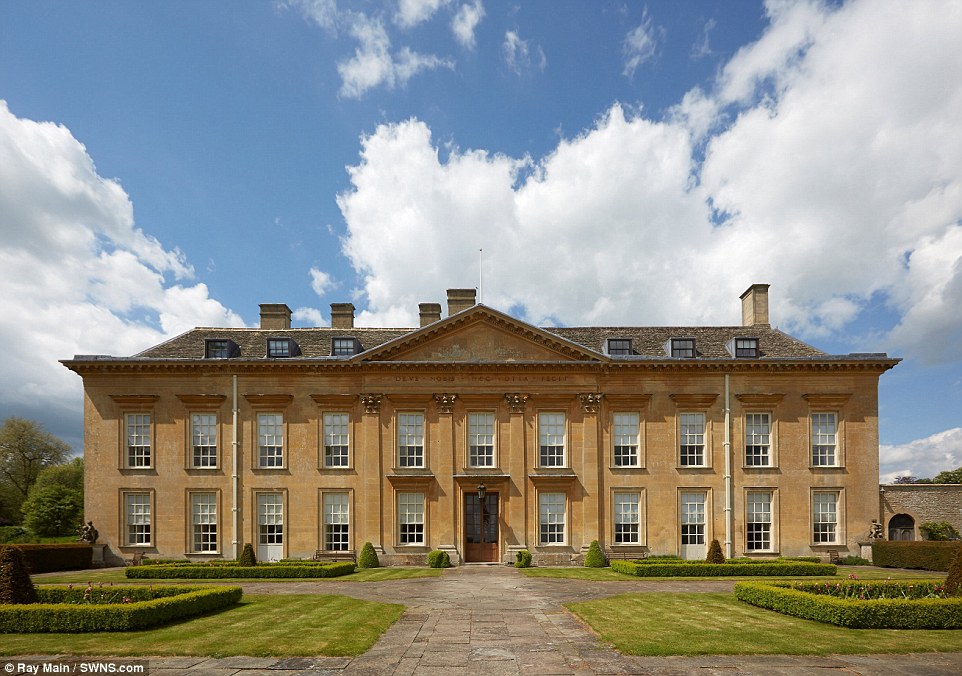
Most curiously the diversion to Heythrop diverted right around Blenheim Palace, Vanbrugh’s most famous work, that was then in the process of construction. Considering Southwell had hired him as architect an inspection of the works might be expected it to have been an essential highlight. It’s assumed therefore that Southwell had visited at least once before and was already familiar with the project. How Heythrop, or for that matter any of the buildings on the itinerary, were selected can only be speculated upon.
Like Middleton Stoney, Dodington Park was entirely rebuilt in the late 18th century, and little can be ascertained on why it was included on the itinerary. Dyrham Park nearby, finished in around 1711, would already have been very familiar to Southwell, who was close to the Blathwayt family and would marry into it in 1716.
Further research is required to know whether Vanbrugh accompanied his patron on this journey. Was he there directing Southwell to features he thought fitting for Kings Weston, or did he have some influence on the selection of properties to visit? Was Vanbrugh present when Kings Weston was set out and begun?
You might expect that by the time Southwell reached Kings Weston, on the 29th April, and after so much inspiration, he might have at last decided on a new design. Indeed he writes that already “upwards of 60 men preparing stones and digging the foundation of the new house”; but still, in the closing days of May he wrote “I am full of a great anxiety and trouble as to mine (house improvements) which arises from the uncertainty of setting out right, and to this hour my model, I cannot say, is fixed; though it may be and will be by the next week.” Clearly April’s ambition to set out the new building had failed, the study trip perhaps even adding confusion to the process.
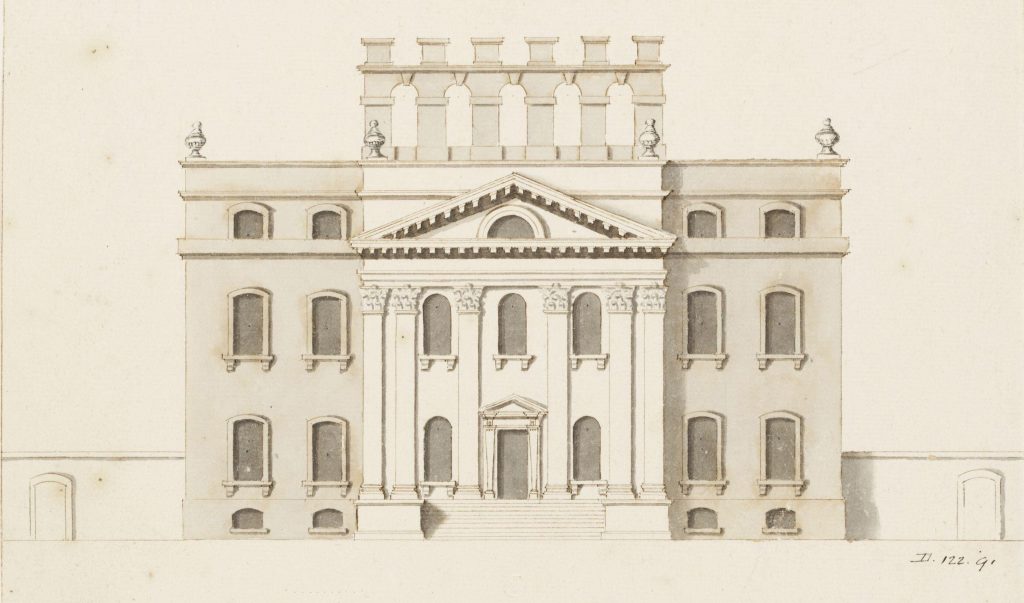
This indecision appears to be Southwell’s own, and Vanbrugh is not mentioned at all. The architect must have been working closely with his client on proposals, so whether his designs were rejected and revised, or whether the fault was his, and he’d been slow in furnishing his client with drawings is not known. There are no significant variations in the general design of the new mansion in existing drawings. Eventually plans for the house were agreed, and on 16th of June work on Vanbrugh’s designs for Kings Weston house was begun. In the context of most of the grand houses of its day, particularly in the Bristol Region, it was still a pretty revolutionary piece of architecture. Where Vanbrugh deviates from the rigours of classical architecture with the main front, and experiments with robust modelling of the other three fronts, Kings Weston is particularly unique.


